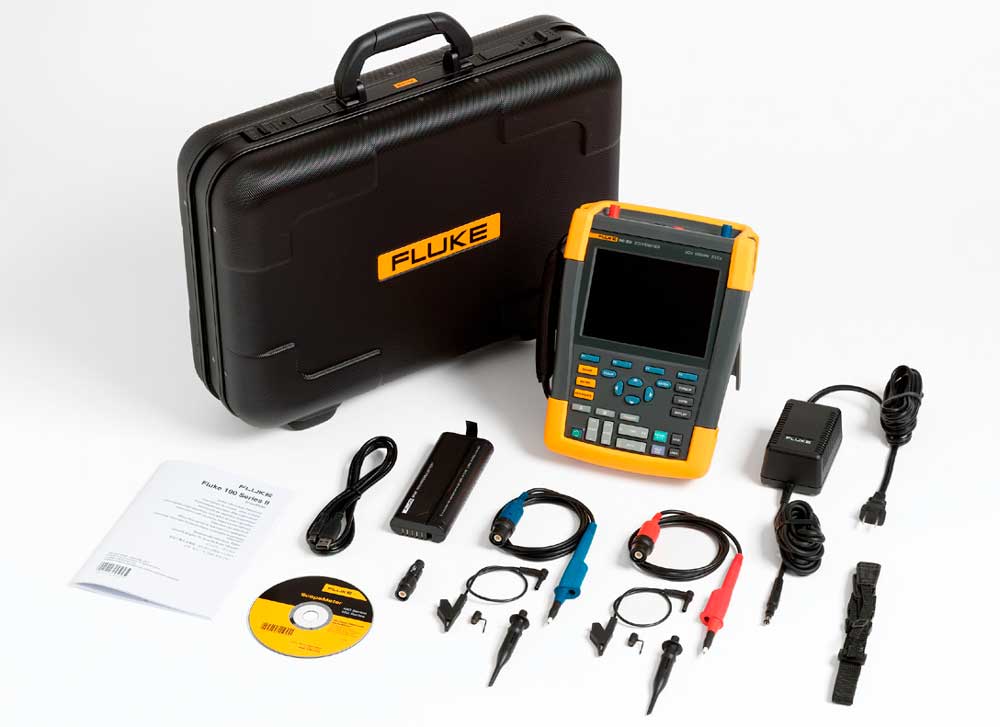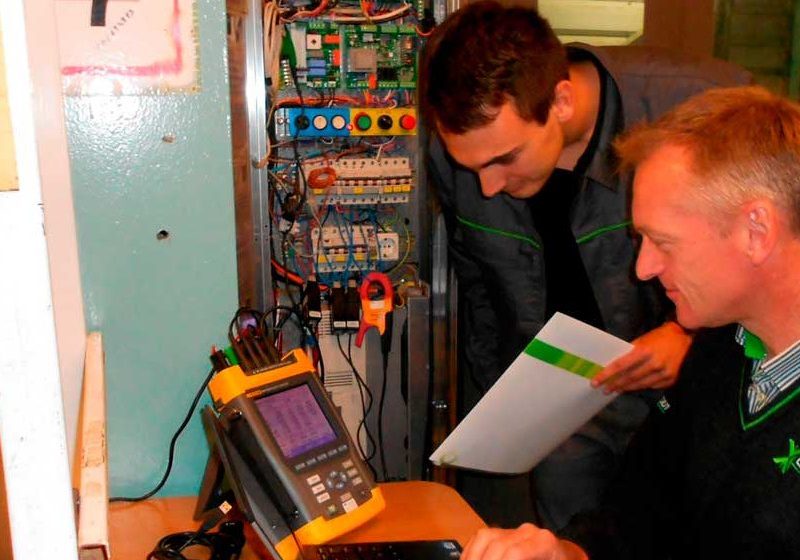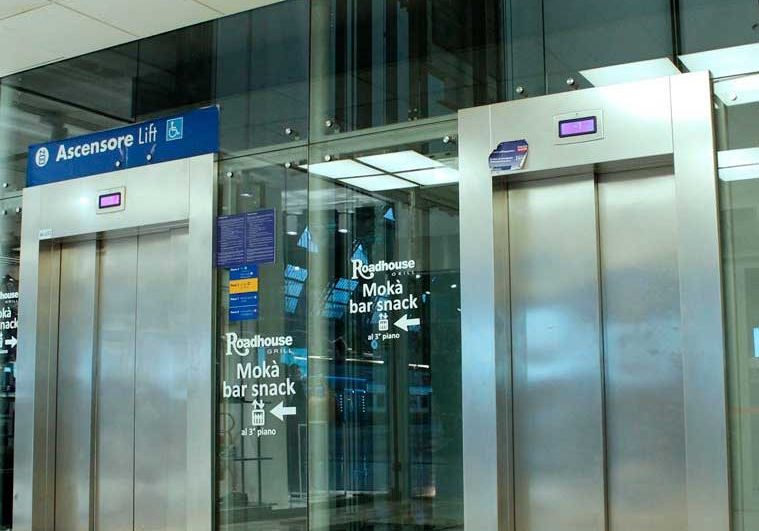Troubleshooting Elevators
Apr 1, 2017

How to find and correct problems with motors, drives and controllers
When it comes to troubleshooting, elevators are a special case. The electric motors that power them are larger and draw more current than a typical fan or appliance motor. There is a complex system of automatic and manual controls. Moreover, the public places where elevators are usually found are busy areas where users may be injured or worse in the event of mechanical or electrical failure. In these facilities, downtime can mean enormous decline of productivity and great material loss.
Learning Objectives
After reading this article, you should have learned:
♦ Why an elevator motor is unique
♦ Why information gathering and recordkeeping are critical
♦ How thermal imaging tools are useful
♦ Special problems in hydraulic elevators
♦ About the main parts of a VFD
For these reasons, elevator design, installation and maintenance demand a high degree of knowledge and expertise. When the performance of an existing elevator has decreased, professional workers are called upon to act quickly so service is restored without introducing additional hazards. Ordinarily, there are two phases to this undertaking. First, workers are in an information-gathering mode, then, service is restored by means of component substitution or repair.
This article will discuss the preliminary troubleshooting task with a view to developing some methods specific to elevator repair. For onsite maintenance persons in a specific facility, before-the-fact information gathering and recordkeeping are critical. Tools of the trade include manufacturers’ documentation and diagnostic equipment, which can work together to facilitate fast, accurate and safe restoration of service.
For example, various thermal-imaging and temperature-measuring tools can be used to discover hot spots that may spell trouble down the road. A good plan is to survey functioning machinery while it is working normally, before problems arise. This is particularly true regarding temperature rise, because abnormal heat will eventually spell trouble. It is always better to take corrective action before — rather than after — equipment failure, and this is particularly true regarding elevators.
History
In the distant past, a variety of engines powered elevators. At first, animals, including humans, tread in sullen silence to lift pharaohs and material goods to heights that, by today’s standards, were modest. Eventually, water, steam, wind and other forces were substituted for those primitive energy sources. Beginning in the 19th century with Thomas Edison’s DC generation and distribution system in lower Manhattan, electric motors became the primary source of rotary power.
Nikola Tesla, in conjunction with George Westinghouse, developed and marketed the AC induction motor, and it quickly eclipsed Edison’s DC motor, which, for the time being, continued to serve niche applications. One of these was to power elevators, where smooth and accurate speed regulation was required for stopping the car gently at each floor.
AC motors acquired this capability only in the mid 20th century with the development of the variable-frequency drive (VFD), which employed pulse-width modulation (PWM) and other methods for precise speed control. Eventually, the AC three-phase induction motor gained relevance in elevator technology, and that is where things stand currently. The bottom line is that elevator technicians now have to be adept in diagnosing problems that may arise in this type of motor control system.
Common Issues
Motor
Motor malfunction is not the only problem area in elevator operation, but there is the potential for catastrophic interruption of service, and technicians need to be aware of symptoms and techniques for interpreting them.
As mentioned, abnormal temperature rise is a sign that component failure may be imminent, and there is always the threat of a system outage. This is especially true of motors. Moreover, in elevators and other sensitive applications, the system will intentionally shut down as a protective measure when high temperature is sensed. This is a common scenario, and the technician is required to diagnose and correct the problem if normal operation is to be restored.
In low-rise applications, hydraulic elevators are common. Typically, there is a large oil reservoir, which serves the dual purpose of providing fluid power for the cylinder and cooling the motor/pump. Overheating is reflected in the oil temperature in this reservoir. Temperature rise can be caused by obstruction in the oil path, motor/pump problems (including low voltage or dropped phase), low oil level due to undetected leakage, aging oil, binding in the cylinder or car path, heavy loading or constant use, high ambient temperature, failure in machine-room ventilation, or a combination of two or more of the above. High oil temperature will ultimately cause the system to shut down as a safety measure. When this happens, a large fan directed at the outside of the oil reservoir can be helpful, but anytime there is excessive heat, it is important to find the underlying cause.
A rough estimate of the temperature status can be obtained by touching the outside of the oil reservoir. A good move would be to install a thermometer, preferably with a big digital readout. A log affixed to a nearby wall should be updated at regular intervals so harmful trends can be spotted before an outage occurs.
Traction (non-hydraulic) elevators are also negatively impacted by too much heat. High temperature can be at once the cause and symptom of many troubles. It is often within the motor. The first thing to look at is the bearings. A hot bearing that still has no side play may run hard, causing the entire motor to overheat, draw excessive current and trip out.
Older bearings have grease fittings, and simply greasing them can solve the problem. Newer bearings are usually sealed, and in the event of failure, they must be replaced. The sealed bearing is a good idea, because abrasive dust is not introduced, but when time eventually runs out for them, they must be replaced.
Another issue pertaining to the motor is overheating of its windings. This can be due to aging of the motor, where the winding insulation is beginning to break down. Alternatively, it can be caused by moisture infiltration or repeated overheating. When this happens, it is usually necessary to send the motor to a specialized motor rebuilding shop, while replacing the motor with a spare if it is necessary to keep the elevator in service.
Usually, motor bearing trouble can be differentiated from problems in the windings by determining the heat source, i.e., at a bearing or nearer the center of the enclosure. Further verification can be obtained by taking resistance and current readings at the individual motor terminals, and comparing these readings to the manufacturer’s documentation or to data acquired when the motor was operating normally.
Drive
If the motor’s windings and bearings check out, and if binding of the load has been ruled out, the time has come to look for power-quality issues. “VFD” can refer either to the drive itself or to the drive together with the driven motor. A typical VFD is housed in a floor-to-ceiling enclosure. The electrical supply is often 480 V, three phase. The motor horsepower determines the circuit size and overcurrent protection. If it is a group installation (consisting of two or more elevators), feeder size is permitted to be de-rated based on diversity of loads. There is always a disconnecting means in a separate enclosure within sight of the motor and inside the machine room. Often, VFDs are sold as a package that includes the motor and a highly functional user interface. The manufacturer generally supplies installation instructions, a user manual, schematics and a troubleshooting guide.
A VFD and the associated motor thrive on a high-quality electrical supply. Voltage readings and current measurements should be substantially uniform for the three phases. As viewed in a spectrum analyzer or oscilloscope, the sine wave should be pure, without damaging harmonics, spikes or harmful fluctuations. Measurements should be taken periodically at VFD input and output, and at the motor terminals. If these readings are taken following the initial installation and at frequent intervals while the equipment is running normally, a database will be created. Typically, temperature will rise very slowly for a long time, then accelerate quickly, soon reaching a damaging level. This is aptly termed the “avalanche effect.”
Electric motors operate more efficiently at high voltage, where less current is needed to deliver the power required for the application. The downside is that for maintenance workers in a high-voltage environment, one erroneous assumption or clumsy move can result in serious injury or death. There are two separate and distinct types of hazard: electric shock and arc fault. Electric shock occurs when the individual contacts a live terminal, wire or conductive surface. Then, if the person is grounded (which is usually the case), the electrical circuit is completed, and current flows through the person’s body causing extensive damage and often disrupting the heart’s natural rhythm. Even when the person is not solidly grounded, where high voltage is involved, there can be an electric shock event. That is because all bodies always have a certain ground potential. Rubber mats, dry shoes and insulated gloves and tools are some help, but do not think it is ever safe to touch a wire or terminal that is energized at more than 30 V.
The other hazard is known as arc flash. When a dropped wrench or slipping screwdriver, for example, completes a circuit between a wire or terminal, or between wires or terminals energized by opposing phases, the tool can be instantly evaporated due to the flow of all the current the utility can deliver, limited only by the impedance of the power line, local wiring and inline transformers. To a nearby worker without extensive protective clothing, the arc blast can be fatal, even though the individual does not experience an actual electric shock.
The best policy is to avoid working on wiring that may be live. All motors are required to have a disconnect. For some very small motors, the disconnect can be the branch-circuit overcurrent device, a plug that can be removed from the receptacle or a unit switch.
The disconnect for a large motor is matched to the size of its electrical circuit, which, in turn, is based on the current required by the motor, given its horsepower. This disconnect is the logical means for powering down the VFD and motor. Still, there is shock hazard, because the large electrolytic capacitors in the front end of the VFD can hold a lethal charge long after the unit has been powered down. Sometimes, the VFD will suffice to bleed down the charge within 1 min. or so (the time required depending on the amount of any parallel resistance), but nothing should be assumed.
Each capacitor should be individually discharged. Resist the impulse to lay a screwdriver across the terminals, because the sudden current surge is likely to damage the dielectric substrate. Instead, connect a low-resistance, high-power resistor to the terminals using long, flexible leads with large insulated alligator clips.
The VFD has three sections. At the upstream end, where the electrical supply enters the enclosure, is the rectifier. The middle section is known as the DC bus, which conveys rectified electrical power to the final section, the inverter. Simple electrical measurements determine which (if any) of these sections is the cause of poor motor performance.
To begin, look at the VFD input with the motor powered down (i.e., the elevator car at rest). Some information can be acquired using a multimeter, but to do a thorough power-quality assessment, an oscilloscope and/or spectrum analyzer is needed. The multimeter will let you know if the RMS voltages of the three legs are substantially equal. For good performance, the lowest leg should be within 5% of the highest leg. This amount may vary depending on the make and model of the VFD, so it is essential to check the user manual for an exact tolerance.
In making an in-depth power-quality evaluation, the oscilloscope is most frequently used. It is important to realize that, in doing VFD work, there is an inherent hazard in using a conventional bench-type oscilloscope. The reason is that, when the probe is plugged into one of the input channels, its ground return lead is directly connected through the oscilloscope chassis to the premises power-supply ground bus, resulting in sudden heavy fault current when the ground return lead contacts a wire or terminal referenced to but floating above ground potential. This fault current may damage the VFD and the oscilloscope, and cause injury to the user. To avoid this hazard, a differential probe can be used, but this expensive accessory is often not available. Most technicians instead use a handheld, battery-operated oscilloscope with inputs isolated from ground and, in most models, from each other.
A further caution – the oscilloscope probes and inputs must be rated for the voltages to be measured. Moreover, the CAT location and maximum voltage contemplated must be considered. (CAT levels I-IV are ratings of test instruments for maximum voltage in terms of their safety in different electrical environments.) Concerning the VFD power inputs, the oscilloscope will reveal waveform anomalies. Anything that varies significantly from a pure sine wave can be problematic. This would include intermittent dead spots, clipping at the waveform peaks and excessive harmonic content, best viewed in an oscilloscope’s “Math/FFT” mode or in a spectrum analyzer.
The bottom line is that a high-quality, three-phase power supply is required if the VFD and motor are to function properly. Once that has been verified, we can proceed to the VFD inner workings. In larger elevator controllers where the VFD is incorporated, a door can be opened to access the electronics. In smaller units, the enclosure must be opened. Either way, the unit should be powered down and residual voltage discharged before proceeding.
The first stage in the VFD is the rectifier. Three pairs of diodes convert the three-phase AC at the input to pulsating DC. Large electrolytic capacitors in parallel with the output of this rectifier stage remove the AC ripple, shunting it to ground. This is necessary to create the pure DC required by the inverter section. Since the ground connection (ultimately returning back to the neutral bar in the electrical service) effectively forms a center tap between the two capacitors, the two DC lines are referenced to but float above ground potential. Neither of these conductors is grounded. Therefore, it is not safe to use a conventional bench-type oscilloscope here.
The other point to notice is that, due to the nature of the full-wave three-phase rectifier, which relates to peak voltages, the DC voltage on the DC bus inside the VFD is actually higher than the AC supply voltage at the input. It is 1.414 times the RMS value as measured with a voltmeter. This means that, for a 480-V drive, the voltage on the DC bus is 678 V, almost 50% higher.
The next stage of the diagnostic procedure is a complete visual inspection of the VFD. In so doing, do not touch anything: it is possible a capacitor was not fully discharged. Checking each diode, capacitor and the semiconductors in the inverter section, inspect for any sign of overheating. The capacitors in the rectifier are frequent offenders. If one shows any sign of burning, leaking, bulging or distortion, it should be replaced.
Complete the visual inspection by checking all circuit boards and conductor terminations for corrosion or signs of overheating. Using insulated tools and gloves (even though the VFD is powered down), retorque all power terminations. Any low-power spade or ribbon connections can be slid apart and remade just to polish them.
While the VFD is powered down, do ohmmeter checks where possible, and, using the multimeter diode and capacitor-check functions, check these devices. Solid-state components can be subjected to nondynamic (hence, not definitive) tests using the diode test function at the base-emitter and base-collector junctions. (The metal-oxide semiconductor field-effect transistor has gate, drain and source terminals, instead of a base, collector and emitter terminals.) This also works at the emitter-collector terminals, because there are diodes shunted across them. Since there are two capacitors, two coils, six diodes and six semiconductors, resistance comparisons that may reveal a bad component can be made.
Motion Controller
So far, this article has addressed elevator troubleshooting and servicing as if the VFD/motor portion of the equipment happened to be the whole story. Actually, other areas must often be considered. Fortunately, the motion controller typically contains an alphanumeric readout that is part of the user interface. When a fault occurs, the elevator usually powers down, frequently with the car stopping between floors. If the stoppage persists for more than a few minutes, passenger extraction must be considered. This involves manually opening a door at an adjacent floor using a key made for the purpose. It may be necessary to pass a stepladder into the car so the passengers can exit.
While the process is not particularly hazardous if carried out properly, there are two problems that must be confronted: passenger stress and company liability. Some elevator maintenance organizations state in writing that passenger extractions should be carried out only by them, and once this statement has been made, the problem of liability is compounded. In some instances, due to distances to the site and the fact that all personnel may be occupied, this alternative may not be feasible. Keeping the confined passengers waiting a substantial length of time could introduce additional health and other hazards.
A good course of action is to consult local regulatory agencies in advance and, using their guidelines, rehearse the passenger extraction process with staff in advance, in addition to providing written instructions. Once passengers have been extracted, restoration of service can become the priority.If a motion controller causes the car to stop, the alphanumeric readout will typically exhibit an error code, such as “E7.” Then, referring to the manufacturer’s documentation (copies of which should be kept in the machine room and maintenance office), the error code should be explained with recommendations for restoration of service. Often, this is done by pressing a reset button or interrupting power to the controller for a specified duration to reset the motion controller for, typically, 1 min. to allow capacitively stored low-level voltages to dissipate due to parallel resistance.
Elevator maintenance and repair is a large and complex field, and it is not for the fainthearted. In no case should it be attempted by those who lack the knowledge and expertise to perform the work safely and without introducing hazards that could appear, either in the short term or distant future.
Learning-Reinforcement Questions
Use the below learning-reinforcement questions to study for the Continuing Education Assessment Exam available online at www.elevatorbooks.com or on p. 109 of this issue.
♦ Why was the introduction of the induction motor a turning point in elevator technology?
♦ What are two purposes of the oil reservoir in a hydraulic elevator?
♦ What are advantages and disadvantages of sealed bearings?
♦ What is the purpose of the DC bus in a VFD?
♦ Which symptoms indicate a bad electrolytic capacitor?
written for such magazines as ELEVATOR WORLD, Electrical Construction and Maintenance, Cabling Business, Electrical Business, Nuts and Volts, PV Magazine, Electrical Connection, Solar Connection, Solar Industry Magazine, Fine Homebuilding Magazine and Engineering News Record. He has also written four books published by McGraw-Hill: 2011 National Electrical Code Chapter by Chapter, Troubleshooting and Repairing Commercial Electrical Equipment, The Electrician’s Trade Demystified and The Homeowner’s DIY Guide to Electrical Wiring, the latter published in December 2014. He holds a BA in English Literature and Composition from Hobart College of Geneva, New York.
Get more of Elevator World. Sign up for our free e-newsletter.








